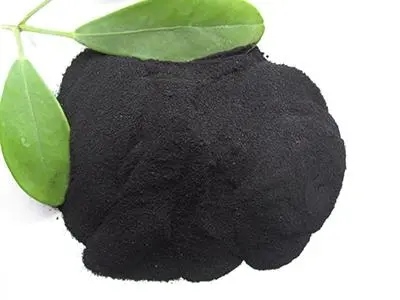
2021-09-27
natural humic acidfertilizerIt mainly exists in peat, lignite and weathered coal. The by-products of coal washing, coal gangue and coal also contain some humic acid. Natural coal evolved from ancient organic matter. After a long period of evolution, carbohydrates are converted into coal, and some of them are decomposed to form Humic acid, combined with coal, calcium, magnesium and other substances.
The upper coal of the lignite is weathered for a long time to form weathered lignite, also known as weathered coal. Fly ash is the main raw material for the preparation of humic acid at present. Good raw materials, the humic acid content in the raw materials should reach40% to 50%, the content of calcium and magnesium ions is about 2%. Humic acid is insoluble in water, which is the fundamental problem of whether humic acid can be utilized. Humic acid can only be soluble when humic acid is in the ionic state. Play a real role. According to reports, humic acid organic fertilizer has a great effect on improving the yield of grapes, red dates, pear trees and other crops, and the soil salinity that improves the soil structure is reduced from 1 percent to 0.65 percent.

At present, my country's humusfertilizerThere are 3 types: one is bagged fertilizer, which is used as base fertilizer. The main function is to improve soil and improve soil combined fertility.; The second is flushing fertilization, which is to add soluble humic acid (sodium humate or potassium humate) to some elements such as nitrogen, phosphorus, and micro-fertilizers; the third type is the stimulating effect of potassium humate (sodium) on plant roots, So as to promote root development, improve crop disease resistance, drought resistance, cold resistance, and supplement nitrogen, phosphorus, micro-fertilizer and other elements; the third type is leaf fertilizer, mainly potassium humate (sodium) stimulates plant roots, thereby Promote root development, improve crop disease resistance, drought resistance, cold resistance, and supplement nitrogen, phosphorus, micro-fertilizer and other elements at the same time; the third type is leaf fertilizer, mainly potassium humate (sodium) stimulates plant roots and promotes root system. The third category is the stimulating effect of potassium humate (sodium) on plant roots, thereby promoting root development and improving crop disease resistance. , drought resistance, cold resistance ability, and nitrogen, phosphorus, micro-fertilizer and other elements at the same time; the third type is leaf fertilizer, mainly the stimulating effect of potassium humate (sodium) on plant roots, thereby promoting root development and improving crop disease resistance, Drought resistance, cold resistance ability, and nitrogen, phosphorus, micro-fertilizer and other elements at the same time; the third type is leaf fertilizer, mainly the stimulating effect of potassium (sodium) humate on plant roots, thereby improving crop resistance..
The above are the types and development of humic acid fertilizers that Xiaobian has sorted out for you. As a chemical fertilizer, humic acid fertilizer will not cause pollution to the environment. It is an environmentally friendly fertilizer and is widely used.